 W
WCreativity is a phenomenon whereby something somehow new and somehow valuable is formed. The created item may be intangible or a physical object.
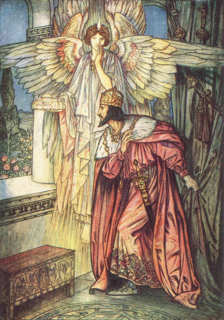 W
WInspiration is an unconscious burst of creativity in a literary, musical, or visual art and other artistic endeavours. The concept has origins in both Hellenism and Hebraism. The Greeks believed that inspiration or "enthusiasm" came from the muses, as well as the gods Apollo and Dionysus. Similarly, in the Ancient Norse religions, inspiration derives from the gods, such as Odin. Inspiration is also a divine matter in Hebrew poetics. In the Book of Amos the prophet speaks of being overwhelmed by God's voice and compelled to speak. In Christianity, inspiration is a gift of the Holy Spirit.
 W
WAuthenticity in art is manifest in the different ways that a work of art, or an artistic performance, can be considered authentic. The initial distinction is between nominal authenticity and expressive authenticity. In the first sense, nominal authenticity is the correct identification of the author of a work of art; of how closely an actor or an actress interprets a role in a stageplay as written by the playwright; of how well a musician’s performance of an artistic composition corresponds to the composer’s intention; and how closely an objet d’art conforms to the artistic traditions of its genre. In the second sense, expressive authenticity is how much the work of art possesses inherent authority of and about its subject, and how much of the artist’s intent is in the work of art.
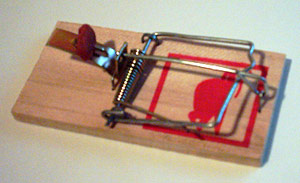 W
W"Build a better mousetrap, and the world will beat a path to your door" is a phrase attributed to Ralph Waldo Emerson in the late nineteenth century. The phrase is actually a misquotation of the statement:If a man has good corn or wood, or boards, or pigs, to sell, or can make better chairs or knives, crucibles or church organs, than anybody else, you will find a broad hard-beaten road to his house, though it be in the woods.
 W
WConceptual economy is a term describing the contribution of creativity, innovation, and design skills to economic competitiveness, especially in the global context.
 W
WThe concept of a link between creativity and mental illness has been extensively discussed and studied by psychologists and other researchers for centuries. Parallels can be drawn to connect creativity to major mental disorders including bipolar disorder, schizophrenia, major depressive disorder, anxiety disorder, OCD and ADHD. For example, studies have demonstrated correlations between creative occupations and people living with mental illness. There are cases that support the idea that mental illness can aid in creativity, but it is also generally agreed that mental illness does not have to be present for creativity to exist.
 W
WCuriosity is a quality related to inquisitive thinking such as exploration, investigation, and learning, evident by observation in humans and other animals. Curiosity is heavily associated with all aspects of human development, in which derives the process of learning and desire to acquire knowledge and skill.
 W
WDesign is a form of intellectual property right concerned with the visual appearance of articles which have commercial or industrial use. The visual form of the product is what is protected rather than the product itself. The visual features protected are the shape, configuration, pattern or ornamentation. A design infringement is where a person infringes a registered design during the period of registration. The definition of a design infringement differs in each jurisdiction but typically encompasses the purported use and make of the design, as well as if the design is imported or sold during registration. To understand if a person has infringed the monopoly of the registered design, the design is assessed under each jurisdiction's provisions. The infringement is of the visual appearance of the manufactured product rather than the function of the product, which is covered under patents. Often infringement decisions are more focused on the similarities between the two designs, rather than the differences.
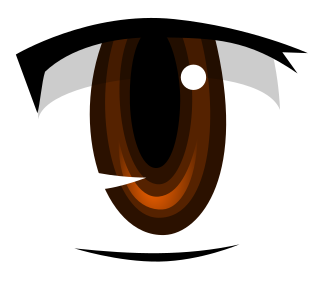 W
WDoujin soft , also called doujin games (同人ゲーム), are video games created by Japanese hobbyists or hobbyist groups, more for fun than for profit; essentially, the Japanese equivalent of independent video games or fangames. Most of them are based on pre-existing material ("modding"), but some are entirely original creations. They are almost always exclusive to Windows-based PCs, but a few notable exceptions also exist for the Dreamcast, a console on which homebrew development was popular.
 W
WAn egg of Columbus or Columbus' egg refers to a brilliant idea or discovery that seems simple or easy after the fact. The expression refers to an apocryphal story, dating from at least the 15th century, in which it is said that Christopher Columbus, having been told that finding a new trade route was inevitable and no great accomplishment, challenges his critics to make an egg stand on its tip. After his challengers give up, Columbus does it himself by tapping the egg on the table to flatten its tip.
 W
WAn enabling technology is an invention or innovation that can be applied to drive radical change in the capabilities of a user or culture. Enabling technologies are characterized by rapid development of subsequent derivative technologies, often in diverse fields. See General purpose technology.
 W
WThe eureka effect refers to the common human experience of suddenly understanding a previously incomprehensible problem or concept. Some research describes the Aha! effect as a memory advantage, but conflicting results exist as to where exactly it occurs in the brain, and it is difficult to predict under what circumstances one can predict an Aha! moment.
 W
WIn video gaming, a fan translation is an unofficial translation of a video game made by fans.
 W
WIn positive psychology, a flow state, also known colloquially as being in the zone, is the mental state in which a person performing some activity is fully immersed in a feeling of energized focus, full involvement, and enjoyment in the process of the activity. In essence, flow is characterized by the complete absorption in what one does, and a resulting transformation in one's sense of time.
 W
WHyperfocus is an intense form of mental concentration or visualization that focuses consciousness on a subject, topic, or task. In some individuals, various subjects or topics may also include daydreams, concepts, fiction, the imagination, and other objects of the mind. Hyperfocus on a certain subject can cause side-tracking away from assigned or important tasks.
 W
WIn philosophy, ideas are usually taken as mental representational images of some object. Ideas can also be abstract concepts that do not present as mental images. Many philosophers have considered ideas to be a fundamental ontological category of being. The capacity to create and understand the meaning of ideas is considered to be an essential and defining feature of human beings. In a popular sense, an idea arises in a reflexive, spontaneous manner, even without thinking or serious reflection, for example, when we talk about the idea of a person or a place. A new or an original idea can often lead to innovation.
 W
WIntellectual property (IP) is a category of property that includes intangible creations of the human intellect. There are many types of intellectual property, and some countries recognize more than others. The most well-known types are copyrights, patents, trademarks, and trade secrets. The modern concept of intellectual property developed in England in the 17th and 18th centuries. The term "intellectual property" began to be used in the 19th century, though it was not until the late 20th century that intellectual property became commonplace in the majority of the world's legal systems.
 W
WIntellectualism refers to related mental perspectives that emphasize the use, the development, and the exercise of the intellect; and also identifies the life of the mind of the intellectual person. In the field of philosophy, “intellectualism” is synonymous with rationalism, knowledge derived from reason. Moreover, the term intellectualism can also have a socially negative connotation about a man or woman intellectual who gives “too much attention to thinking” and who shows an “absence of affection and feeling”.
 W
WAn invention is a unique or novel device, method, composition or process. The invention process is a process within an overall engineering and product development process. It may be an improvement upon a machine or product or a new process for creating an object or a result. An invention that achieves a completely unique function or result may be a radical breakthrough. Such works are novel and not obvious to others skilled in the same field. An inventor may be taking a big step toward success or failure.
 W
WA mind map is a diagram used to visually organize information. A mind map is hierarchical and shows relationships among pieces of the whole. It is often created around a single concept, drawn as an image in the center of a blank page, to which associated representations of ideas such as images, words and parts of words are added. Major ideas are connected directly to the central concept, and other ideas branch out from those major ideas.
 W
WMorphological analysis or general morphological analysis is a method for exploring possible solutions to a multi-dimensional, non-quantified complex problem. It was developed by Fritz Zwicky.
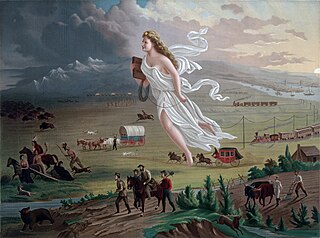 W
WProgress is the movement towards a refined, improved, or otherwise desired state. In the context of progressivism, it refers to the proposition that advancements in technology, science, and social organization have resulted, and by extension will continue to result, in an improved human condition; the latter may happen as a result of direct human action, as in social enterprise or through activism, or as a natural part of sociocultural evolution.
 W
WThe psychology of art is an interdisciplinary field that studies the perception, cognition and characteristics of art and its production. For the use of art materials as a form of psychotherapy, see art therapy. The psychology of art is related to architectural psychology and environmental psychology.
 W
WRemix culture, sometimes read-write culture, is a term describing a society that allows and encourages derivative works by combining or editing existing materials to produce a new creative work or product. A remix culture would be, by default, permissive of efforts to improve upon, change, integrate, or otherwise remix the work of copyright holders. While combining elements has always been a common practice of artists of all domains throughout human history, the growth of exclusive copyright restrictions in the last several decades limits this practice more and more by the legal chilling effect. In reaction, Harvard law professor Lawrence Lessig, who considers remixing a desirable concept for human creativity, has worked since the early 2000s on a transfer of the remixing concept into the digital age. Lessig founded the Creative Commons in 2001, which released Licenses as tools to enable remix culture again, as remixing is legally prevented by the default exclusive copyright regime applied currently on intellectual property. The remix culture for cultural works is related to and inspired by the earlier Free and open-source software for software movement, which encourages the reuse and remixing of software works.
 W
WReversal theory is a structural, phenomenological theory of personality, motivation, and emotion in the field of psychology. It focuses on the dynamic qualities of normal human experience to describe how a person regularly reverses between psychological states, reflecting their motivational style, the meaning they attach to a situation at a given time, and the emotions they experience.
 W
WThe majority of studies on sleep creativity have shown that sleep can facilitate insightful behavior and flexible reasoning, and there are several hypotheses about the creative function of dreams. On the other hand, a few recent studies have supported a theory of creative insomnia, in which creativity is significantly correlated with sleep disturbance.
 W
WThought encompasses an "aim-oriented flow of ideas and associations that can lead to a reality-oriented conclusion". Although thinking is an activity of an existential value for humans, there is still no consensus as to how it is adequately defined or understood.
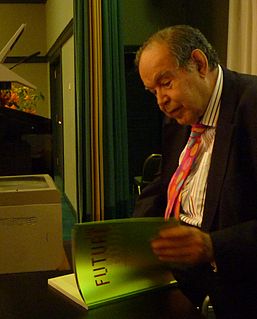 W
WVertical thinking is a type of approach to problems that usually involves one being selective, analytical, and sequential. It could be said that it is the opposite of lateral thinking. Unlike lateral thinking that involves using added intuition, risk taking, and imagination through unconscious and subconscious processes, vertical thinking consists of using more of a conscious approach via rational assessment in order to take in information or make decisions. This type of thinking encourages individuals to employ a sequential approach to solving problem where a creative and multidirectional response are seen as imprudent. Vertical thinkers prefer to rely on external data and facts in order avoid failure or counterfactual thinking.
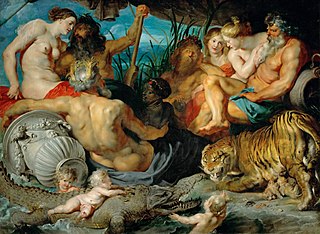 W
WA work of art, artwork, art piece, piece of art or art object is an artistic creation of aesthetic value. Except for "work of art", which may be used of any work regarded as art in its widest sense, including works from literature and music, these terms apply principally to tangible, physical forms of visual art:An example of fine art, such as a painting or sculpture. An object that has been designed specifically for its aesthetic appeal, such as a piece of jewellery. An object that has been designed for aesthetic appeal as well as functional purpose, as in interior design and much folk art. An object created for principally or entirely functional, religious or other non-aesthetic reasons which has come to be appreciated as art. A non-ephemeral photograph, film or visual computer program, such as a video game or computer animation A work of installation art or conceptual art.